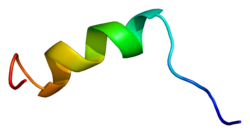| SCN3A | |||||||||||||||||||||||||||||||||||||||||||||||||||
|---|---|---|---|---|---|---|---|---|---|---|---|---|---|---|---|---|---|---|---|---|---|---|---|---|---|---|---|---|---|---|---|---|---|---|---|---|---|---|---|---|---|---|---|---|---|---|---|---|---|---|---|
 | |||||||||||||||||||||||||||||||||||||||||||||||||||
| Identifiers | |||||||||||||||||||||||||||||||||||||||||||||||||||
| Aliases | SCN3A , NAC3, Nav1.3, sodium voltage-gated channel alpha subunit 3, FFEVF4, EIEE62, DEE62 | ||||||||||||||||||||||||||||||||||||||||||||||||||
| External IDs | OMIM: 182391; MGI: 98249; HomoloGene: 56005; GeneCards: SCN3A; OMA:SCN3A - orthologs | ||||||||||||||||||||||||||||||||||||||||||||||||||
| |||||||||||||||||||||||||||||||||||||||||||||||||||
| |||||||||||||||||||||||||||||||||||||||||||||||||||
| |||||||||||||||||||||||||||||||||||||||||||||||||||
| |||||||||||||||||||||||||||||||||||||||||||||||||||
| |||||||||||||||||||||||||||||||||||||||||||||||||||
| Wikidata | |||||||||||||||||||||||||||||||||||||||||||||||||||
| |||||||||||||||||||||||||||||||||||||||||||||||||||
Sodium channel, voltage-gated, type III, alpha subunit (SCN3A) is a protein that in humans is encoded by the SCN3A gene. [5] [6]





